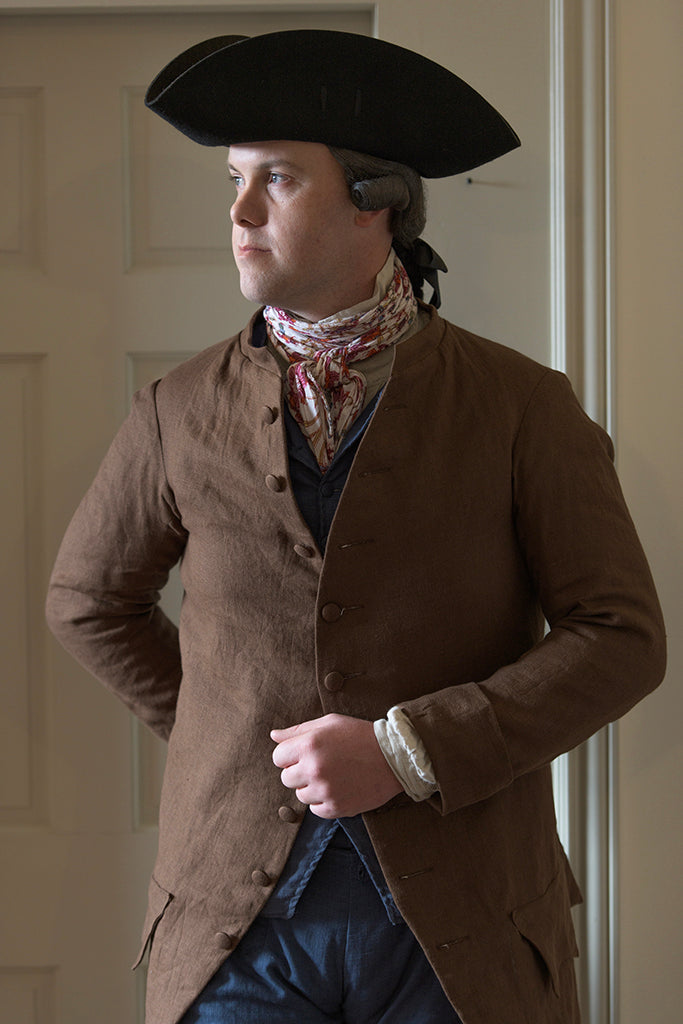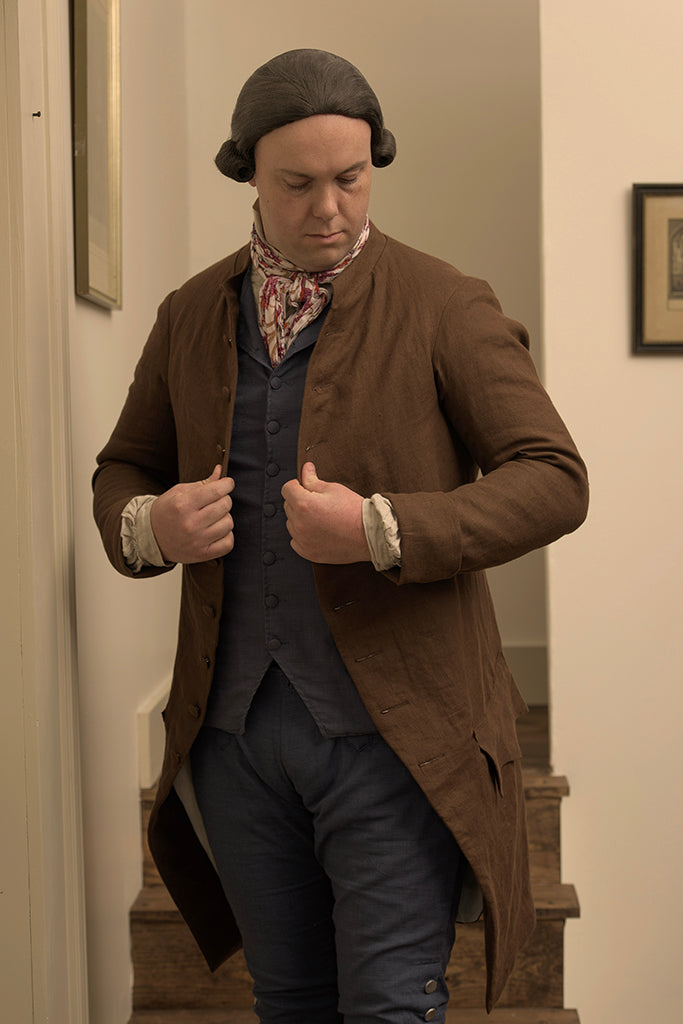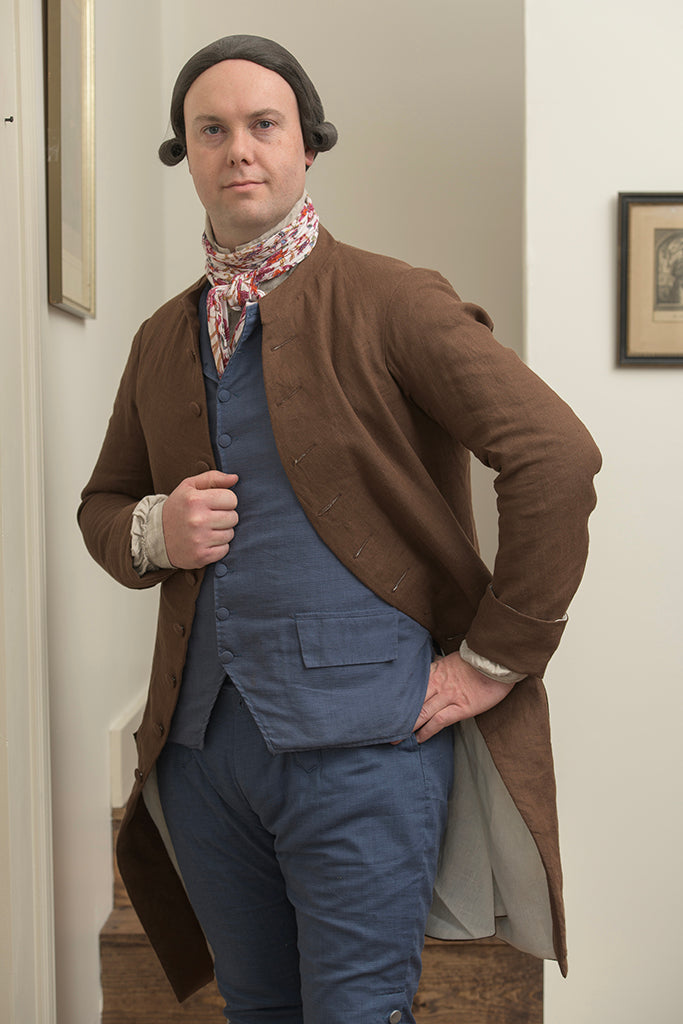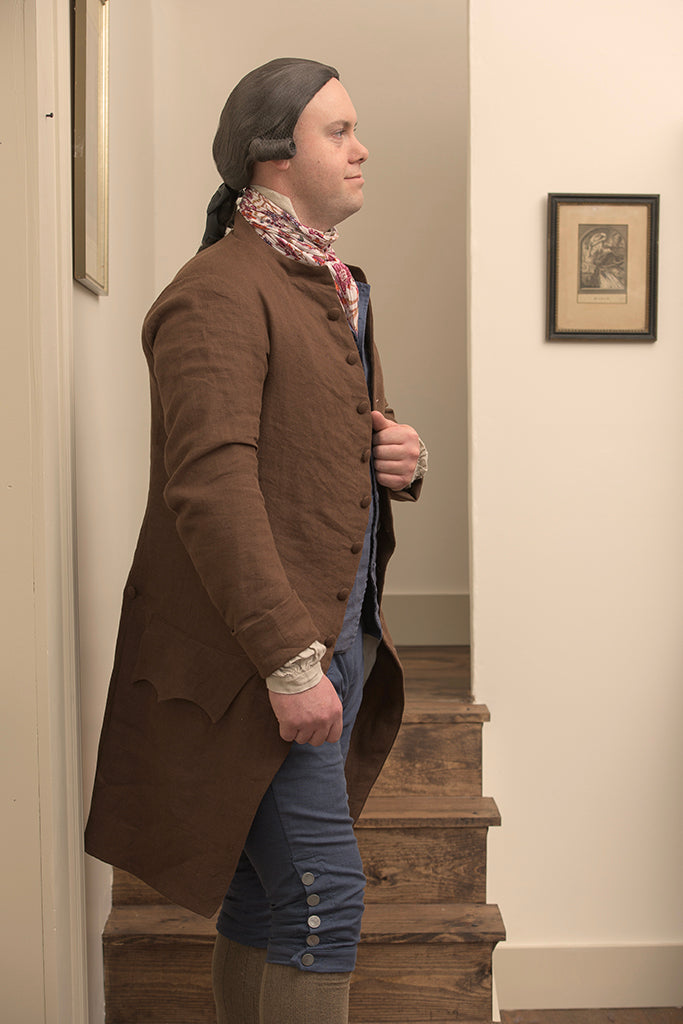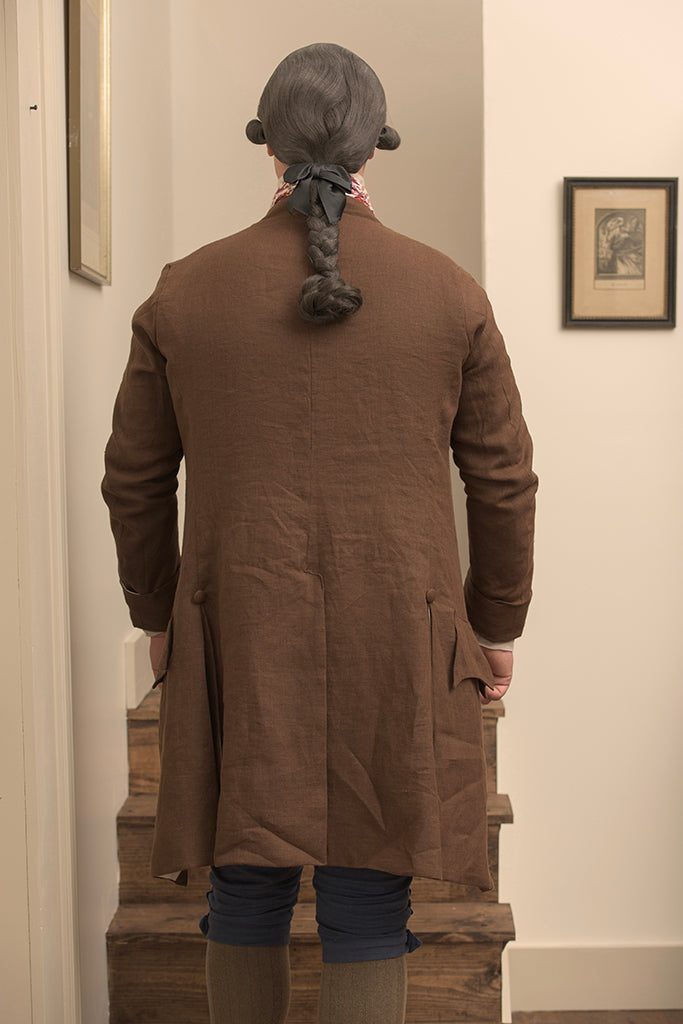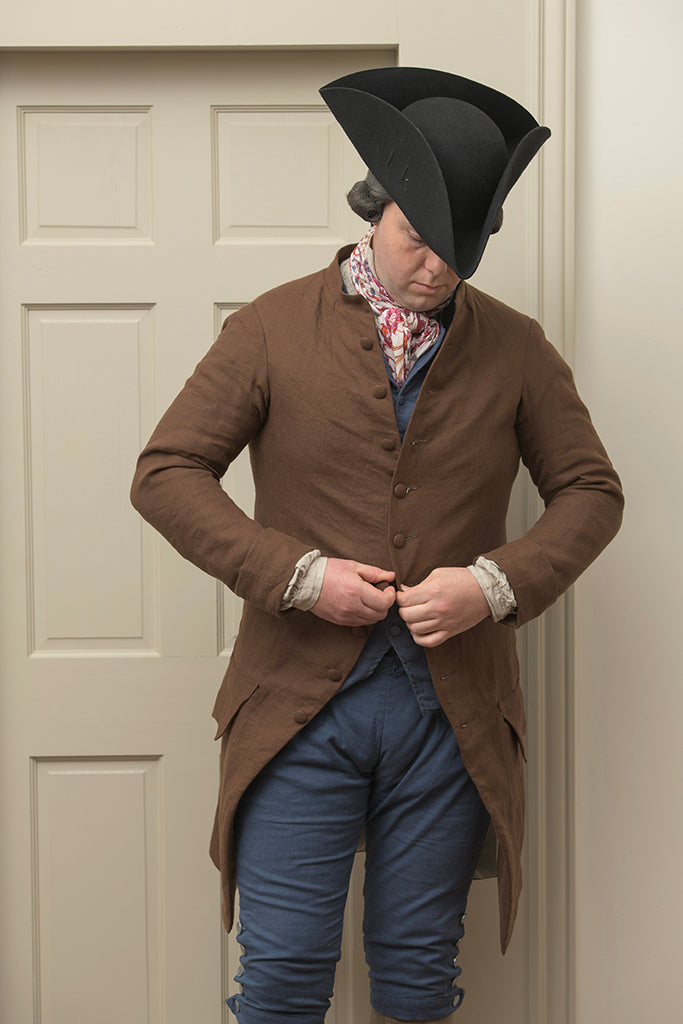Menu
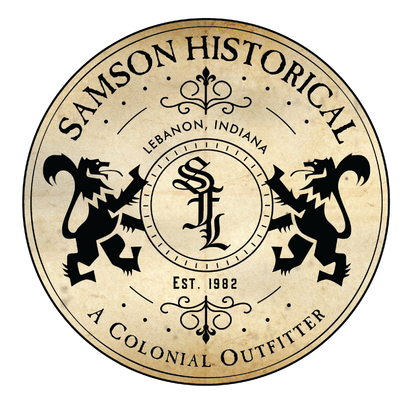
Men’s Clothing
Women’s Clothing
Children's Clothing
Manteau de redingote en lin des années 1770 - Col court | Brun
-
To cut a clean and proper silhouette, the front of the 1770s version of the frock coat curved out over the belly, then began to recurve back over the waist and terminating in skirts that had two deep pleats in front and one or two pleats in back, with the line of the pleats approximating the line of the front edge.
The most common features of the 1770’s frock coat replicated here are the presence of a rounded cape collar, and a center back lapover. This design is well suited for protecting the lower trunk when walking or riding in cool or inclement weather. There was a simplification of construction in the period, with fewer buttons and buttonholes, and often no buttonholes on the plain round cuff and scalloped pocket flap.
This pattern has been derived directly from four examples Henry Cookes’ collection he has to study and pattern, and another that is in a private collection.
Measuring Advice
Measuring Advice from Henry Cooke, Historical Costume Services
How to take the Measures - Have someone else take your measures, if possible. Because of physiological changes of your body during movement, self-inflicted measures often have errors, sometimes to the point of being impossible to take. If possible, wear the clothes that you will be wearing under the coat or jacket, or wear clothes of comparable thickness when you have your measurements taken. In this way, the coat will fit smoothly without binding. When taking measures, the tape should be held easily and naturally, neither held slack nor drawn tight. When taking measures of the circumference of the arm, the arm should be flexed to get the maximum dimension and avoid constraint.







